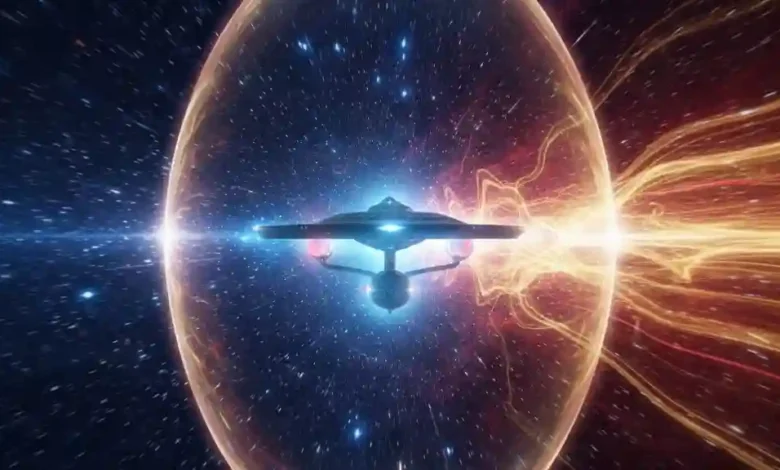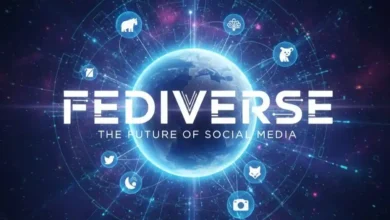Beyond Light Speed: Is Star Trek’s Warp Drive Closer Than We Think?

For decades, the idea of a “warp drive” – the faster-than-light propulsion system that powers the USS Enterprise across vast cosmic distances in Star Trek – has been firmly relegated to the realm of science fiction. A dazzling concept, certainly, but one constrained by the ironclad laws of physics, specifically Einstein’s theory of relativity which dictates nothing can accelerate beyond the speed of light within spacetime.
Or does it?
Recent theoretical advancements, fueled by groundbreaking insights into the very fabric of the universe, are breathing new life into the audacious idea of superluminal travel. What was once considered pure fantasy is now the subject of serious scientific inquiry, prompting us to ask: could Star Trek’s warp drive, or something akin to it, be theoretically possible after all?
The Alcubierre Drive: Bending Spacetime, Not Breaking Rules
The most prominent and widely discussed theoretical framework for a warp drive is the Alcubierre drive, proposed in 1994 by Mexican theoretical physicist Miguel Alcubierre. His ingenious solution doesn’t violate Einstein’s speed limit, but rather circumvents it.
Instead of accelerating a spacecraft through spacetime to faster-than-light speeds, the Alcubierre drive proposes to literally warp spacetime around the spacecraft. Imagine a ‘bubble’ of flat spacetime created around the ship. In front of this bubble, spacetime would be contracted, and behind it, spacetime would be expanded. The spacecraft itself would remain stationary within this bubble, while the bubble – and thus the ship – would be effectively surfing a wave of distorted spacetime, moving at an arbitrarily fast speed relative to an outside observer.
Think of it like an escalator. You’re walking on the escalator at a normal pace, not exceeding your own personal speed limit. But the escalator itself is moving much faster, carrying you along at a greater overall speed. Similarly, the Alcubierre drive wouldn’t make the ship move faster than light locally, but would allow it to traverse vast distances effectively faster than light globally.
The Physics Behind the Fantasy: Negative Energy and Exotic Matter
While the concept sounds elegant, its practical implementation faces immense hurdles, primarily the requirement for negative energy density, or “exotic matter.”
According to Alcubierre’s equations, creating the spacetime-bending warp bubble would necessitate a ring of matter with negative mass-energy. This hypothetical exotic matter would possess properties unlike anything we’ve observed in the universe. It would push rather than pull gravitationally, and its existence is currently unproven.
However, the concept of negative energy isn’t entirely science fiction. The Casimir effect, for instance, demonstrates a real-world phenomenon where quantum fluctuations can create localized regions of negative energy density between two closely spaced plates. While the amount of negative energy generated in the Casimir effect is minuscule, it offers a tantalizing hint that exotic matter, in some form, might not be a complete impossibility.
Beyond Alcubierre: Other Theoretical Avenues
While the Alcubierre drive remains the most well-known contender, other theoretical approaches to warp-like travel are also being explored:
- Traversable Wormholes: These hypothetical tunnels through spacetime could connect two distant points in the universe, allowing for instantaneous travel. However, like warp drives, their stability and creation would likely require exotic matter.
- Constant-Velocity Warp Bubbles: Recent research has explored modifications to the Alcubierre metric that might reduce the exotic matter requirements, potentially allowing for warp bubbles that move at a constant, sub-light speed but still offer significant travel advantages over conventional propulsion.
- “Sub-Warp” Technologies: Even if true faster-than-light travel remains elusive, the pursuit of warp drive physics could lead to breakthroughs in other areas of propulsion, such as highly efficient plasma drives or antimatter engines, dramatically cutting down interstellar travel times.
The Road Ahead: Challenges and Hope
The journey from theoretical possibility to technological reality is long and fraught with challenges. The amount of negative energy required for an Alcubierre drive, even a tiny one, is astronomical – far exceeding anything we can currently conceive of generating. Furthermore, the immense gravitational stresses on the exotic matter ring, and the potential for “Cauchy horizons” (regions where causality breaks down), present additional theoretical obstacles.
Yet, the pursuit of warp drive technology is not merely an academic exercise. It pushes the boundaries of our understanding of fundamental physics, inspiring new avenues of research in quantum mechanics, general relativity, and cosmology. The very act of attempting to “break” the light barrier may reveal deeper truths about the universe we inhabit.
Imagine a future where interstellar travel is no longer the stuff of dreams. A future where humanity can explore exoplanets, discover new civilizations, and unlock the secrets of the cosmos firsthand. While the challenges are immense, the theoretical possibility of a warp drive, once confined to the pages of science fiction, now offers a tantalizing glimpse into a future where the stars are truly within our reach.
The final frontier beckons, and with it, the possibility that one day, we too might boldly go where no one has gone before.
For more Odinozz Tech articles, click here.
Follow Odinozz on social media. Click here.



